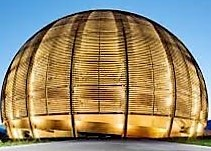Speaker
Description
Neutron-induced reactions play an important role in several stellar nucleosynthesis scenarios. Experimental determination of their rates are limited by the available neutron flux at the relevant energies, sample size, especially in the case of unstable isotopes, and detection. The Soreq Applied Research Accelerator Facility (SARAF) enabled enhanced opportunities for such measurements by providing a mA proton beam at energies of up to 5 MeV via the $^7$Li$(p,n)$ reaction. At a proton energy of $E_p = 1.912$ MeV the resulting neutron spectrum resembles that of a Maxwellian flux at $kT\approx30$ keV, with a neutron flux on the order of $10^{10}$ n/s/cm$^2$ on the sample.
The Liquid Lithium Target (LiLiT) was built to serve as a lithium-based neutron-production target at SARAF, designed to deal with the $\approx8$ kW SARAF beam and, over the last decade, allowed the measurements of many $(n,\gamma)$ Maxwellian-Averaged Cross-Sections (MACS) of interest to the $s$-process.
We will summarize the past activity at LiLiT, and discuss future opportunities and challenges for other ideas that are being explored. Specifically, we are developing a method for measurements of $(n,p), (n,\alpha)$ and $(n,f)$ MACS values at the temperature range of $1.5-3.5$ GK, which are relevant for explosive stellar scenarios. Examples for interesting cases are the $^{26}$Al, $^{44}$Ti and $^{56}$Ni $(n,p)$ cross sections. A prompt detection of the outgoing charged-particles imposes a substantial challenge due to the huge $\gamma$ and neutron radiation. Several detection solutions are currently considered and will be presented.
